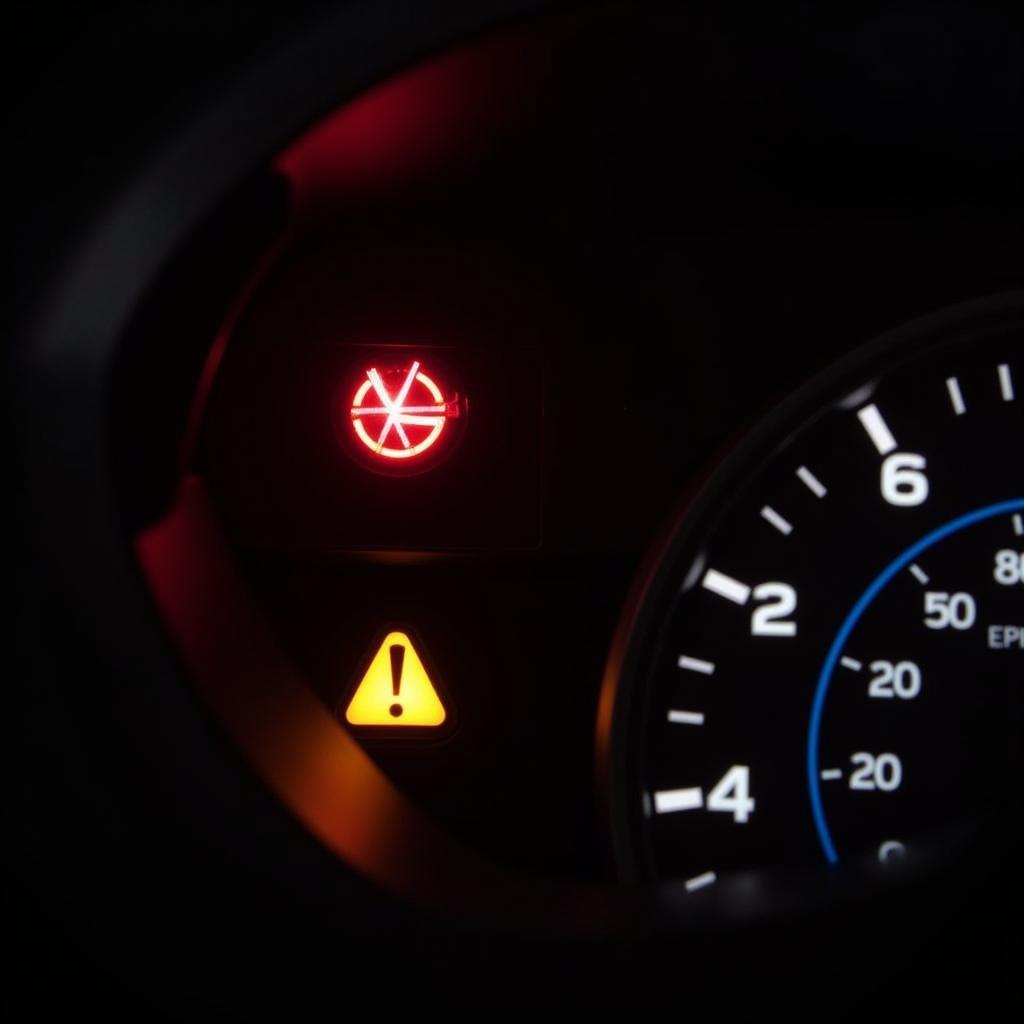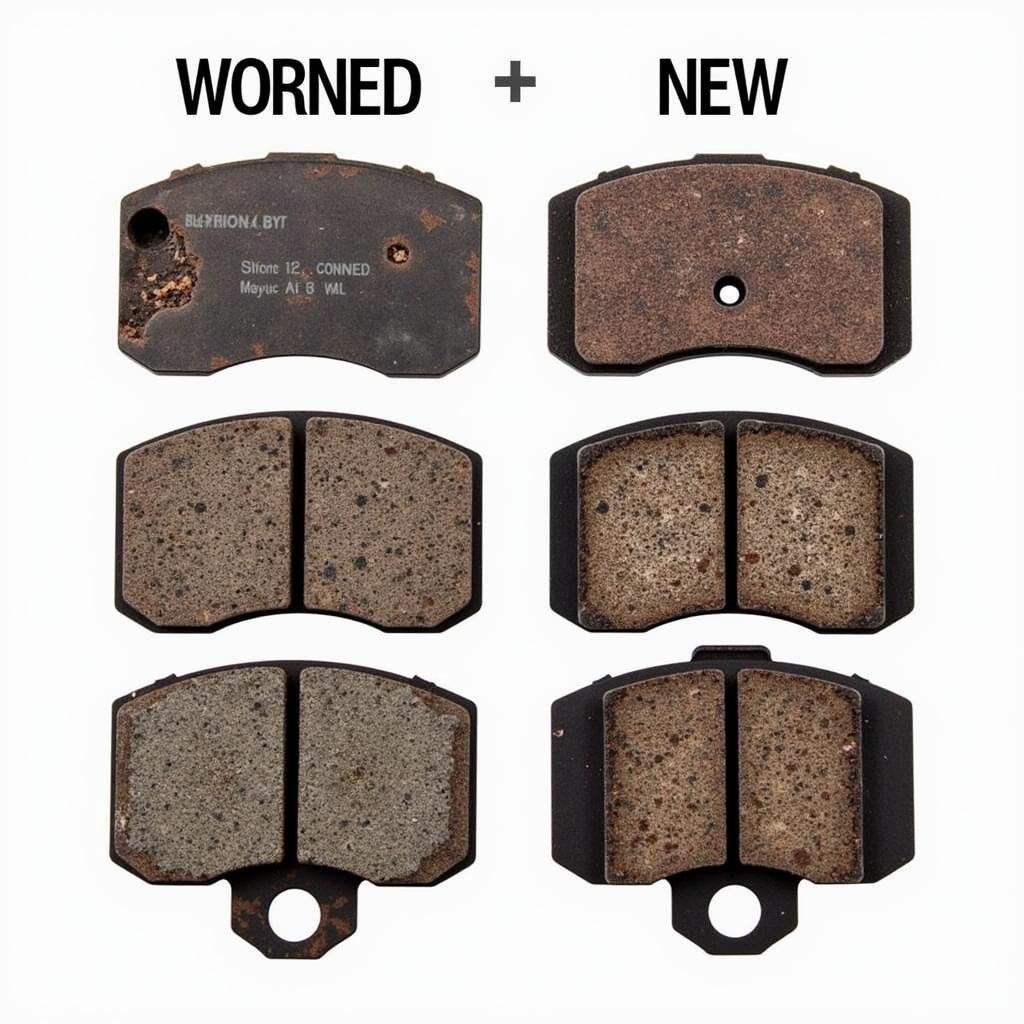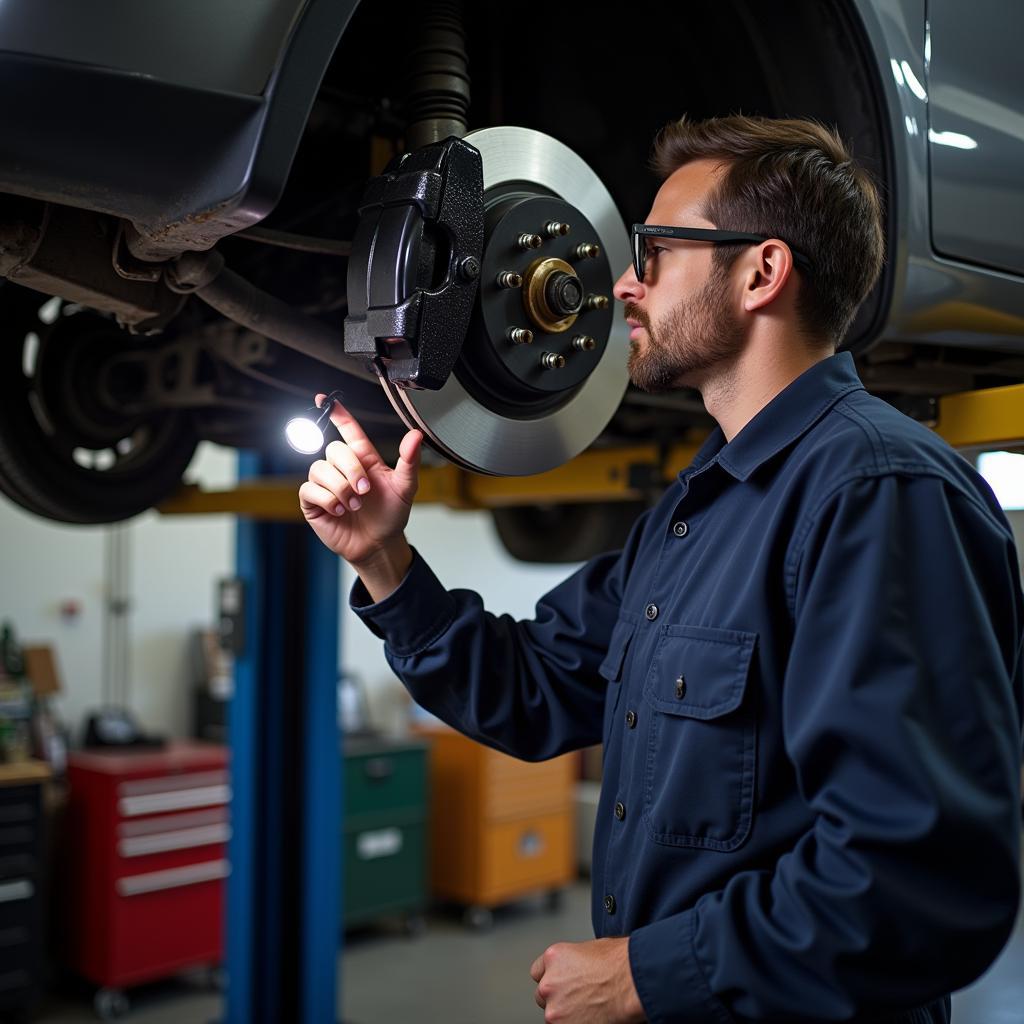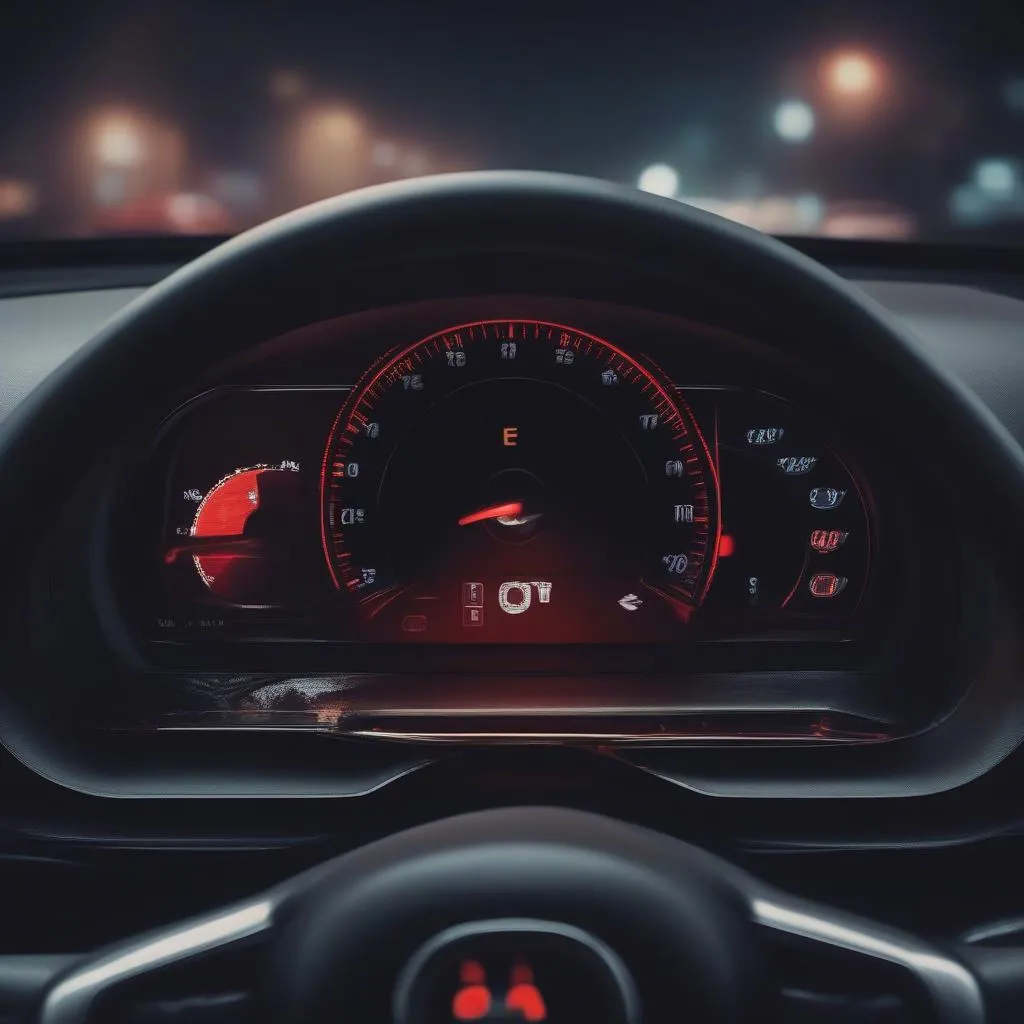Imagine this: you’re cruising down the road, and as you step on the gas, a dreaded sight appears on your dashboard—the brake warning light. This scenario can be unnerving, but don’t panic! While a brake warning light that illuminates when you accelerate can signal a potentially serious issue, it doesn’t always mean a catastrophic failure. Understanding the common causes and knowing what steps to take can help you address the problem effectively.
 Car dashboard with brake warning light illuminated
Car dashboard with brake warning light illuminated
Why Does My Brake Warning Light Come on When Accelerating?
The brake warning light has one primary function: to alert you of potential problems within your braking system. It’s linked to several components, and when the system detects an issue, the light activates. Let’s explore the most frequent reasons why your brake warning light might turn on when you accelerate:
1. Low Brake Fluid Level
One of the most common culprits is low brake fluid. Your car’s braking system relies on hydraulic pressure to function correctly. When you press the brake pedal, brake fluid amplifies the force, pushing the brake pads against the rotors to slow down or stop the vehicle. If the brake fluid level drops too low, often due to a leak or worn brake pads, the system’s pressure diminishes. This drop in pressure can trigger the warning light, especially when accelerating, as the engine’s power might exacerbate the pressure imbalance.
2. Worn Brake Pads
Your brake pads endure significant wear and tear. As you brake, the friction material on the pads gradually wears down. When the pads become excessively thin, the brake caliper pistons have to extend further to engage the rotors. This extended piston travel requires more brake fluid, potentially leading to a drop in pressure and triggering the warning light, especially when the engine’s power demands more braking force during acceleration.
 Worn brake pads compared to new brake pads
Worn brake pads compared to new brake pads
3. Faulty Brake Caliper
The brake caliper houses the pistons that push the brake pads. A malfunctioning caliper, often caused by a stuck piston or a leak in the caliper seal, can lead to uneven brake pad wear, reduced braking force, and a drop in brake fluid level—all of which can activate the brake warning light.
4. ABS System Malfunction
Modern vehicles come equipped with an Anti-lock Braking System (ABS). While the ABS warning light usually illuminates separately if there’s a problem, a malfunctioning ABS system can sometimes trigger the brake warning light. This scenario often occurs due to a faulty ABS sensor or a problem with the ABS module, impacting the hydraulic pressure within the braking system and leading to the warning light, especially when acceleration might affect the system’s stability.
toyota prius brakes warning lights
5. Brake Fluid Leak
A leak in your brake lines, hoses, or any component of the hydraulic system can lead to a rapid drop in brake fluid level. This situation is particularly dangerous as it significantly compromises your ability to brake effectively. If you suspect a brake fluid leak, it’s crucial to seek immediate professional attention.
What Should I Do if My Brake Warning Light Comes on When Accelerating?
If your brake warning light illuminates while you’re accelerating, it’s essential to take the following steps:
- Don’t panic: While a brake warning light is a cause for concern, it’s crucial to remain calm. Pull over to a safe location as soon as possible.
- Check your brake fluid: Carefully open the brake fluid reservoir (refer to your owner’s manual for its location) and check the fluid level. If it’s low, adding brake fluid might temporarily resolve the issue, but it’s crucial to have the system inspected for leaks or other underlying problems.
- Inspect your brake pads: If you’re comfortable doing so, take a look at your brake pads. If they appear significantly worn, it’s time for a replacement.
- Seek professional help: If the brake fluid level is extremely low, you suspect a leak, or you’re unsure about any aspect of your brake system, it’s best to have a qualified mechanic diagnose and repair the issue.
“Ignoring a brake warning light is like playing Russian roulette with your safety,” says Jake Williams, a senior automotive technician with over 20 years of experience. “Addressing brake issues promptly is crucial to ensure your vehicle can stop safely and reliably.”
FAQ
Q: Can I drive with the brake warning light on?
A: It’s highly discouraged. Driving with a brake warning light on can be dangerous, as it indicates a potential issue with your braking system.
Q: How often should I check my brake fluid?
A: It’s a good practice to check your brake fluid level at least once a month and more frequently if you notice any changes in your brake pedal feel.
Q: How long can I drive on worn brake pads?
A: It depends on driving conditions and pad quality, but it’s best to replace brake pads when they reach the minimum thickness specified by your car manufacturer.
Q: Can a faulty brake light switch trigger the brake warning light?
A: While less common, a faulty brake light switch can sometimes cause issues with the brake warning light, as they are often interconnected.
Q: Is it expensive to fix a brake warning light issue?
A: The repair cost varies depending on the underlying problem, ranging from a simple brake fluid top-up to more complex repairs like caliper replacements.
 Mechanic inspecting a car's brake system
Mechanic inspecting a car's brake system
Conclusion
A brake warning light illuminating when accelerating should never be ignored. By understanding the common causes and taking appropriate action, you can ensure the safety and reliability of your vehicle’s braking system. Remember, when it comes to brakes, erring on the side of caution is always the best approach.

